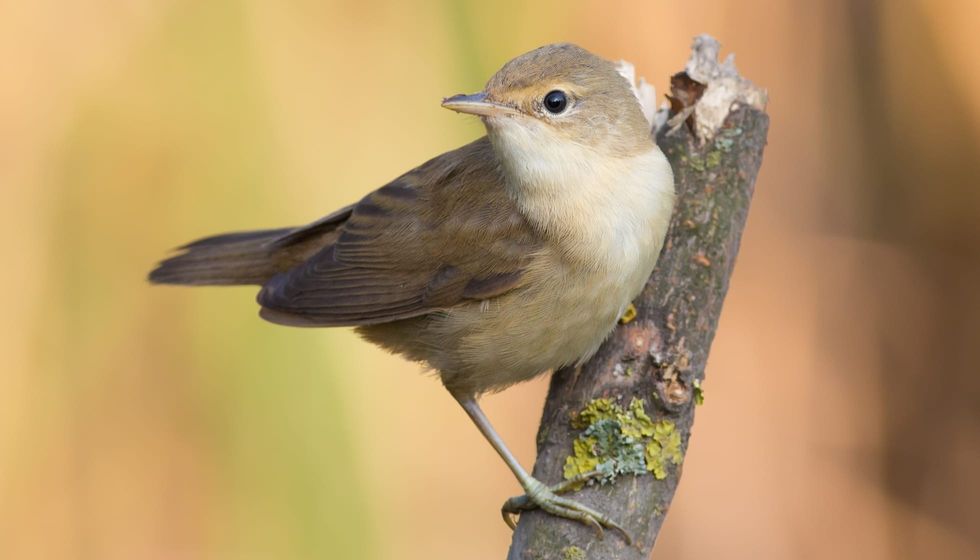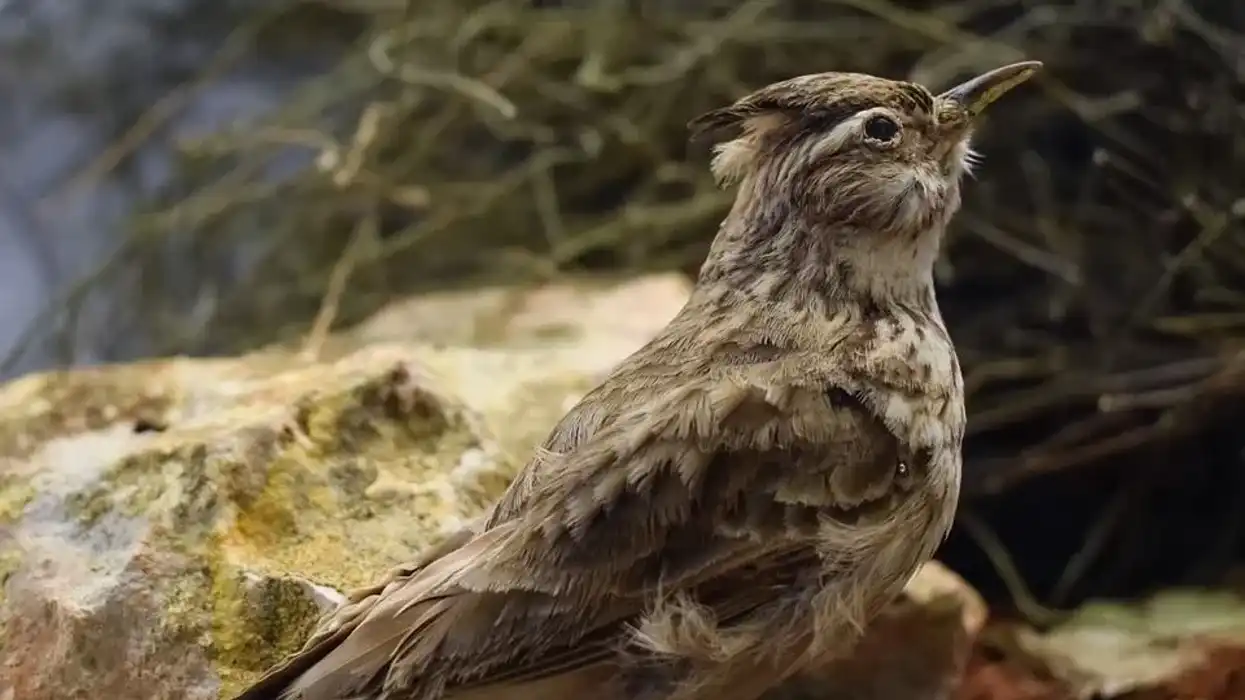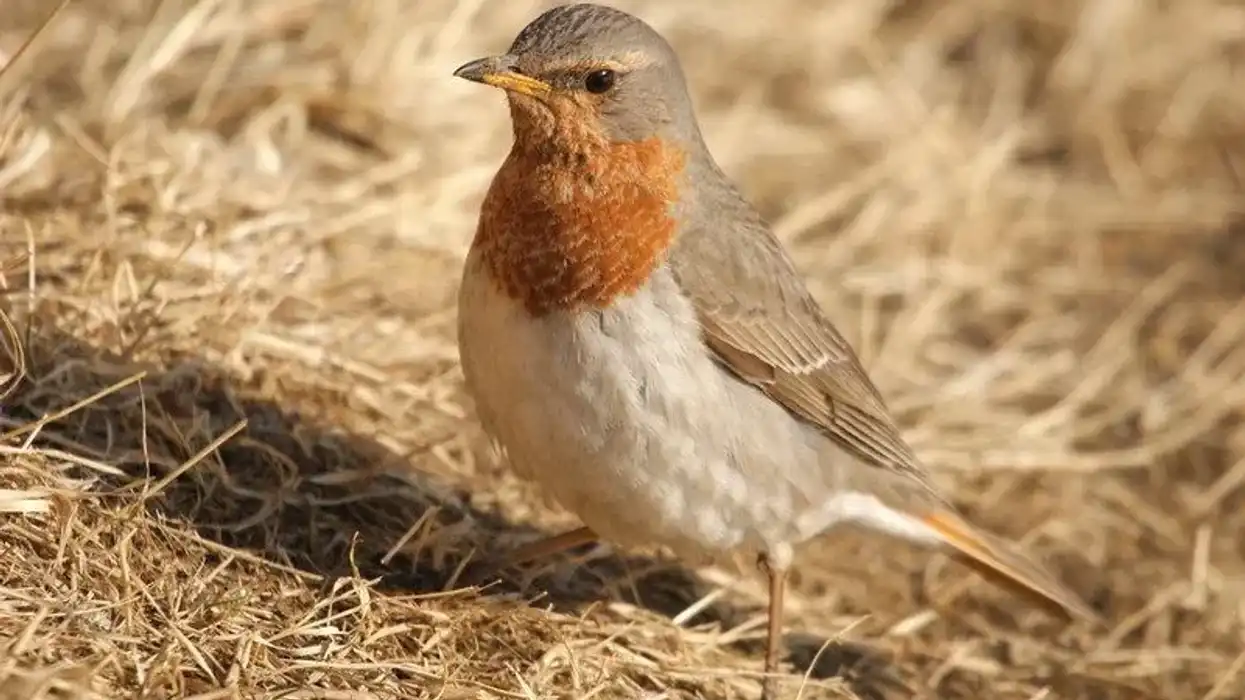Are you fascinated by warblers, like Blackburnian warblers? Then we have all the information on Eurasian reed warblers.
The Eurasian reed warbler (Acrocephalus scirpaceus) is a species of bird that belongs to the genus Acrocephalus, family Acrocephalidae, and order Passeriformes of birds. The scientific name of the bird is Acrocephalus scirpaceus. There are four subspecies under this species of bird and their geographical distribution differs according to them.
The Eurasian reed warbler range spreads across many parts of Eurasia such as Ireland, Spain, Russia, Arabia, and Turkey. These birds have a very plain-looking plumage. The plumage is an overall olive-brown color, while the head is of a little darker shade.
The Eurasian reed warbler is a secretive and shy species of bird that does not interact with humans a lot. It is better to leave them in their natural habitat where they can thrive.
For more relatable content, check out these umbrellabird facts and ovenbird facts for kids.
Eurasian Reed Warbler Interesting Facts
What type of animal is a Eurasian reed warbler?
The Eurasian reed warbler (Acrocephalus scirpaceus) is a species of bird. Another type of warbler is the blackburnian warbler.
What class of animal does a Eurasian reed warbler belong to?
The Eurasian reed warbler bird (Acrocephalus scirpaceus) belongs to the genus Acrocephalus, family Acrocephalidae, order Passeriformes, and class Aves of animals.
How many Eurasian reed warblers are there in the world?
The population range of these birds in an approximate number in Europe is about 4,240,000-7,760,000 mature birds. The European population is known to form about 35% of the world's total population of Eurasian reed warblers. The global population range equates to somewhere around 12,100,000-22,200,000 mature birds.
Where does a Eurasian reed warbler live?
There are four subspecies under this species of bird. The geographical distribution range of these four subspecies is different. The Eurasian reed warbler geographic location includes parts of Asia, Europe, Africa. The specific countries include Spain, Ireland, England, Turkey, Russia, Sudan, Arabia, Uzbekistan, Kazakhstan, Uganda, Ethiopia, Egypt, Somalia, North Africa, southern parts of Africa, and many more.
What is a Eurasian reed warbler's habitat?
Non-breeding Eurasian reed warblers (Acrocephalus scirpaceus) inhabit deserts, mangroves, forest edges, tall grass, reed, thickets near rivers and lakeshores, and secondary bushes and scrubs. Breeding birds occur in beds of reeds near water, marshland, and willow bushes near cornfields and brackish waters.
These birds primarily stay in lowlands, but in Switzerland, they can be seen up to an elevation of 0.6 mi (1000 m), and it seems to be higher in the Caucasus region.
Who do Eurasian reed warblers live with?
Birds of this species are known to be solitary. They only come together during the breeding season.
How long does a Eurasian reed warbler live?
The exact lifespan of Eurasian reed warblers (Acrocephalus scirpaceus) is not known. However, reed warblers, in general, live for about two years.
How do they reproduce?
The breeding season of these birds occurs around May to August in central and western Europe. They are primarily monogamous, and only a few have been seen to be bigamous. Not much is really known about the courtship behavior between males and females.
The nests are solely built by females. After building a nest, the female lays about three to five eggs on average.
The number of broods they have is not known. Both the males and females of this species incubate the eggs for the next 8-13 days. Both parents care for the chicks until they become independent within the next 10-14 days.
What is their conservation status?
The conservation status of the Eurasian reed warbler species (Acrocephalus scirpaceus) according to the International Union for Conservation of Nature is listed as Least Concern. The major threat these birds are facing is habitat loss.
They have been included in the Bern Convention Appendix II and CMS Appendix II as preservation measures within their geographical distribution range, and more plans have been made.
Eurasian Reed Warbler Fun Facts
What do Eurasian reed warblers look like?
Eurasian reed warblers (Acrocephalus scirpaceus) are small-sized birds. They have a very plain plumage, quite similar appearance to marsh warblers. The flanks of these birds are buff and the rump is rufous-brown in color. The dorsal side is olive-brown in color, with the head a little darker shade. They have a long and pointed bill.
How cute are they?
Birds of this species can be pretty cute due to their small size and warm colors. These warblers are also secretive and shy.
How do they communicate?
Eurasian reed warbler birds (Acrocephalus scirpaceus), like all other birds of their genus Acrocephalus, communicate visually and vocally. The Eurasian reed warbler song is a strident rhythmic one, consisting of repetitive squeaky and grating notes.
How big is a Eurasian reed warbler?
An adult Eurasian reed warbler bird (Acrocephalus scirpaceus) is about 5.1 in (13 cm) in length. The wingspan of these birds is around 6.7-8.3 in (17-21 cm) in length. These birds are slightly smaller than palm warblers that are about 7.9-8.3 in (20-21 cm) in length.
How fast can a Eurasian reed warbler fly?
The exact speed at which these birds fly is not known. However, they have been seen to move at quite a fast pace.
How much does a Eurasian reed warbler weigh?
These are small-sized birds. An adult Eurasian reed warbler bird (Acrocephalus scirpaceus) weighs only about 0.3-0.7 oz (8-19.7 g).
What are the male and female names of the species?
The males of this species are called cocks, and the females of this species are called hens.
What would you call a baby Eurasian reed warbler?
A baby Eurasian reed warbler bird (Acrocephalus scirpaceus) is called a hatchling or a chick.
What do they eat?
Birds of this species are known to be omnivorous. These birds are opportunistic feeders and will eat anything and everything they see available. Animal-based food consists mainly of insects of all kinds, like stoneflies, mosquitoes, damselflies, dragonflies, mayflies, snails, springtails, cockroaches, larval bugs, caddisflies, ants, termites, larval beetles, and crickets.
Other than that, they also eat spiders and snails. Plant-based food includes flowers, fruits, berries, seeds, and more. They catch their prey from bushes, reeds, stems, and ground.
Are they dangerous?
They are not known to be dangerous or aggressive towards humans. However, they have been seen to be territorial. It is better not to disturb their nests.
Would they make a good pet?
There are no records of this species of bird being kept as pets. They are rather shy and secretive in nature. They don't interact with humans a lot.
Did you know...
The females of this bird species build deep cup-shaped nests with grass stems, reed inflorescences, and reed blades. The nests usually hang from 2-8 vertical reed stems at the height of 0.5-6.6 ft (15-200 cm) from shallow water.
Do Eurasian reed warblers migrate?
The Eurasian reed warbler bird (Acrocephalus scirpaceus) is a migratory bird species. The migration pattern of these birds is that they leave in the fall and migrate to spend their winter elsewhere.
They have been seen to primarily spend their winter in Africa, from the Sahara to the south to Zambia.
A few of them have been seen to go northwards of the Sahara as well, and some fly from Morocco, Iberia, and southern France to the east to Arabia and Turkey. They come back to their breeding grounds in spring.
What is the Eurasian reed warbler's call?
Song notes of this species of bird occur in a repetitive manner, like 'kerr-kerr-kerr', 'kek-kek-kek', 'chirruc-chirruc-chirruc', 'chirr-chirr-chirr'. The songs sound a lot less mimetic than marsh warblers. General calls sound like 'che' or 'chk'. When disturbed, their calls sound like 'chrre', 'chreeh', or 'trrr-rr'.
Here at Kidadl, we have carefully created lots of interesting family-friendly animal facts for everyone to discover! Learn more about some other birds from our red bird of paradise facts and cardinal bird facts pages.
You can even occupy yourself at home by coloring in one of our free printable paradise riflebird coloring pages.
Second image by Ron Knight









